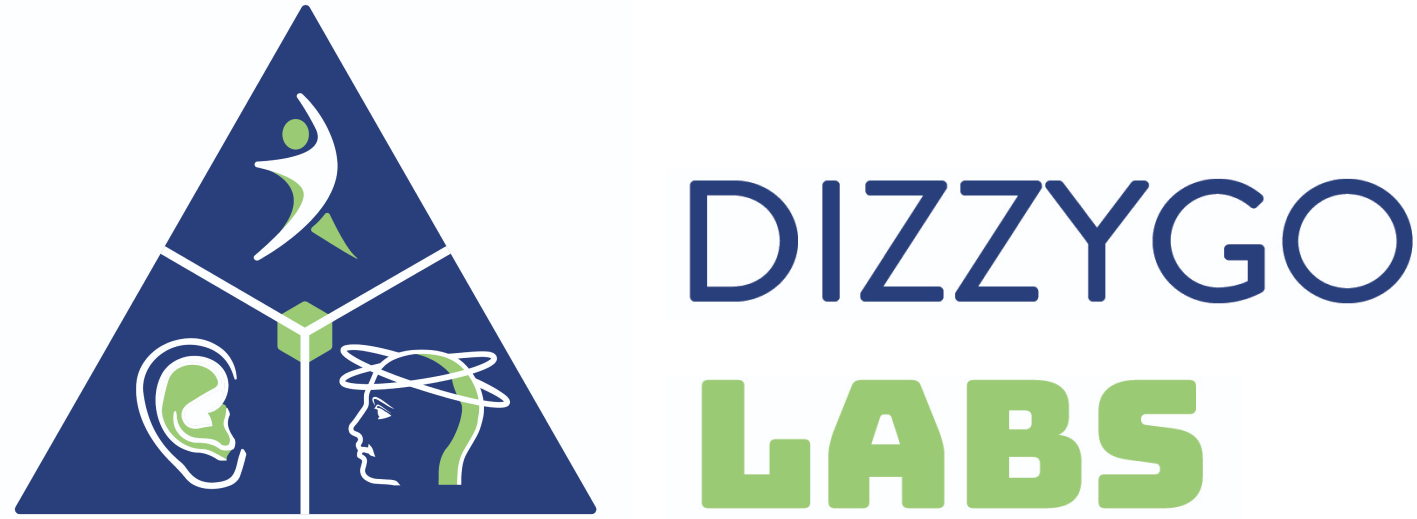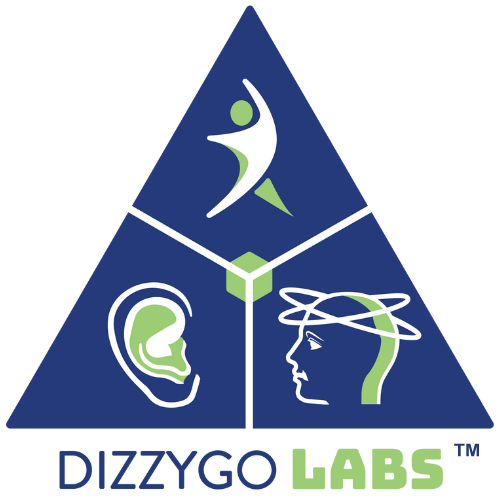Vertigo: A Symptom; Not a Condition
Because we understand this distinction well, we strive to provide the most effective treatment.

Have you occasionally felt a spinning sensation, blurred vision, imbalance, and whirling? Have you had a tendency to fall in the past? If the answer seems to be yes, then know that you might have suffered from an episode of vertigo. It can have more than one root cause. Fortunately, the advancements in medical science have made it possible to diagnose the primary reason for the issue, formulate potent medications, offer restorative therapy akin to canal repositioning, suggest beneficial lifestyle changes, and help manage vertigo permanently.
How does vertigo Affect in life?
Picture vertigo as the unpleasant intruder who gatecrashes your party only to add to your woes. A typical bout of vertigo can make you feel all these and more: the ground beneath your feet starts tilting, your surroundings begin spinning, your steps become shaky, and your speech mumbled.
But what leads to the onset of vertigo? Inflammation of the vestibular nerve, fluid build-up in the inner ear, ototoxic medications, and head injuries are just a few of the long list of underlying conditions that can be at play!
Fortunately, you have DizzyGo Labs by your side. We are committed to diagnosing and treating vertigo so that you can recover in no time. Armed with industry-leading diagnostic tools, a team of highly-skilled doctors, and empathetic staff members, we are ready to take care of vertigo challenges whatever comes our way. So, whether it is Meniere’s Disease, Vestibular Neuritis, Benign Paroxysmal Positional Vertigo, Labyrinthitis, or something else, know that we have got you covered.
Dizzy? Unsteady?
Our Specialized Tests Can Help
Posturography
What is Posturography?
If you have been experiencing balance-related ailments along with dizziness and frequent falls, then your doctor may recommend a Posturography test. It can assess your balance function. In simple terms, this test is carried out to evaluate how well the vestibular, visual, and proprioceptive systems work together to keep the body stable. Also known as Computerized Dynamic Posturography (CDP), there are two variations of this test – Static Posturography (Sensory Organization Test – SOT) and Dynamic Posturography.
How does it work?
This is a fairly simple process, wherein the patient is required to stand upright on a platform – sometimes using a safety harness. It takes about 15-30 minutes to be performed accurately.
The patient needs to feel at ease and maintain silence at the same time to avoid any stimulus altering the balance of the individual. A healthcare professional will ask the patient to change their movements frequently to register them.
The data produced offers detailed reports of the patient’s responses which are compared against the usual standards for the patient’s body type and age.
The patient needs to feel at ease and maintain silence at the same time to avoid any stimulus altering the balance of the individual. A healthcare professional will ask the patient to change their movements frequently to register them.
The data produced offers detailed reports of the patient’s responses which are compared against the usual standards for the patient’s body type and age.
What are the benefits of Posturography?
- Helps learn about the root causes of balance-related ailments
- Score-based reports accurately interpret test results.
- Customizable treatment plans for balance management
- Non-invasive in nature
- Beneficial for tracking vestibular therapy progress.
Vestibular Rehabilitation Therapy
What is VRT?
It is quite possible to feel exhausted while managing your daily errands, especially if you experience imbalance, dizziness, oscillopsia, motion sensitivity, and falls at regular intervals. Thankfully, VRT (Vestibular Rehabilitation Therapy) – a specialized form of physiotherapy – can help alleviate the symptoms mentioned above.
How does it work?
The first step towards restoring your health to its former glory (aka getting treated) is to get yourself evaluated by a doctor. Healthcare professionals will gauge the functionality of your vestibular system, followed by assessing your arm and leg strength, gait, balance, and flexibility.
Post the check-up, a certified vestibular therapist will prescribe exercises and maneuvers tailored to the patient’s needs, including habituation and gaze stabilization, balance and postural training, and canalith repositioning maneuvers.
Patients are needed to perform these exercises at the clinic under expert supervision and continue the regimen at home. It should be noted that Improvements are often visible within a few weeks but the duration may vary depending on the symptoms.
Benefits of VRT
- No medication intervention
- Customizable according to patient requirements
- Helps the brain compensate for inner ear deficits
- Restores life to normal from vestibular complications
Videonystagmography
What is Videonystagmography (VNG)?
VNG – a gold-standard test – plays a crucial role in identifying the underlying cause of dizziness, imbalance, and giddiness by measuring involuntary eye movements (nystagmus) that occur due to vestibular dysfunction. If you have been experiencing any of the above symptoms and have consulted a Vertigo Specialist, you may be asked to undergo clinical and VNG evaluation for an accurate diagnosis and personalized treatment plan.
How does it work?
Patients sit in a dark room, wearing a pair of goggles that contain infrared cameras.
During Oculomotor Testing, the individual looks at a visual target while keeping their head still. It helps in evaluating eye coordination and tracking.
While undergoing Positional Testing, individuals are instructed to move their heads and bodies in different positions. This allows specialists to observe abnormal eye movements, which are key in diagnosing BPPV.
In caloric testing, a stimulus in the form of hot and cold air or water is introduced in the ear. This helps check how the vestibular system responds. Some people may experience a bout of mild dizziness during this time but it is unalarming and temporary.
Lastly, a Vestibular-Ocular Reflex (VOR) Assessment is done to examine how the eyes stabilize during head movements.
The entire procedure may take about 30-60 minutes, or more in the case of the elderly. Those taking up the tests should ideally be limiting their caffeine and alcohol intake from the day before. Certain medications may also be prohibited for consumption before VNG.
Benefits of Videonystagmography (VNG)
- Non-invasive procedure
- Helps detect both peripheral and central causes of vertigo
- Provides clearer and more accurate results
Escape from the Grip of Vertigo by Speaking To Us!
Why grapple with wobbly steps and the distress of slurred speech when you can heal effortlessly? Filling out the form is all that we ask of you. We will promptly schedule an appointment with one of our best healthcare professionals so that you can go back to living your life without disruptions.
Possible FAQs and Answers
Is Vertigo a disease?
Vertigo is a symptom of an underlying problem. Diagnosing the root cause is the first step towards getting effective treatment.
Can vertigo be classified as life-threatening?
Vertigo is not commonly considered lethal and can be treated using medications, Maneuver/Rehabilitation therapy, a few lifestyle changes, or a combination of these. However, some forms, similar to the Central Vertigo, can have a more dramatic presentation.
Is Vertigo always caused by a problem in your brain?
A host of issues can trigger vertigo. While inner ear problems are one of the major causes, there are other reasons as well. Some of them are medications, ear infections or inflammation, age-related changes, injury to the ear or brain, neurological issues, stress, hormonal fluctuations, and cardiovascular problems (including high blood pressure).
Several cases of vertigo are usually traced back to disturbances in the vestibular system which helps maintain balance and keeps us aware of our body’s position.
How long can a vertigo episode last?
A vertigo episode can be mild, meaning it typically lasts a few seconds. However, it can also be severe and persist for several days.
Can lying down help ease vertigo symptoms?
Lying down and closing their eyes can worsen the vertigo symptoms for some people. However, it is equally important to avoid activities that can lead to accidents — driving, climbing stairs, walking, etc — during a vertigo episode.
Is vertigo set off by acrophobia (fear of heights)?
According to some research, vertigo can be triggered by the fear of heights, also known as acrophobia. Individuals can feel uneasy when they are in an elevated position from the ground. They may experience a spinning sensation with a reduced ability to orient themselves adequately.

